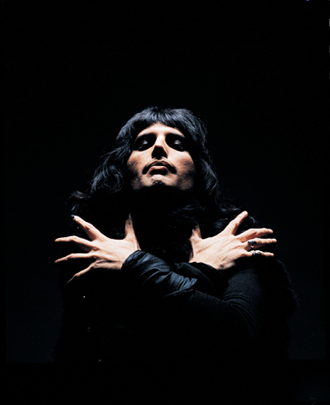This review of Queen's A Night at the Opera was published in my university newspaper, Exeposé.
 |
| Image from fanpop.com |
"VOCALS, vocals, Bechstein Debauchery, and more vocals”. Freddie Mercury, often regarded as one of the greatest pop singers and frontmen of all time, was nothing if not flamboyant. The duties listed above were accredited to Mercury in the “cast list” of what I consider to be Queen’s greatest (and certainly their most flamboyant) LP, A Night at the Opera.
The band’s camp sense of humour was inherent to their identity and although their particular brand of musical absurdity may not be to everybody’s tastes, there is no denying their legacy, nor their prolific output. From their formation in 1971 to Mercury’s death from HIV in 1991, Queen churned out 13 studio albums and 55 singles, 30 of which broke into the UK top 20. As a self-confessed fangirl, picking my favourite Queen album has been like choosing between my own (imaginary) children. However, for its mélange of genres, experimental techniques, and pitch-perfect arrangements, A Night at the Opera stands out as Queen’s most accomplished work.
A Night at the Opera was at the time of its release in 1975 the most expensive album ever produced. A lot was hanging on its commercial success; the group even considered disbanding if the album were to fail. Luckily for them (and for me) the album went straight to #1 in the UK and its first single, the legendary ‘Bohemian Rhapsody’, maintained the #1 spot for nine weeks.
The album’s strength does not derive from ‘Bohemian Rhapsody’ alone. Despite being distinctly Mercury-heavy in terms of song writing, A Night At The Opera was a wholly collaborative project. Each member contributed a future classic and every number saw input from the group as a unit. For instance, on ‘Seaside Rendezvous’, drummer Roger Taylor and Mercury worked together to vocally imitate kazoos and trumpets in the musical bridge section of the song.

From the dramatic and vitriolic opener ‘Death On Two Legs’, to a patriotic re-arrangement of ‘God Save The Queen’, now synonymous with Queen’s live performances, each song on the album serves as a scene in Queen’s fantastical “opera.” The charmingly sappy ‘You’re My Best Friend’, bassist John Deacon’s dedication to his wife, sits alongside guitarist maestro Brian May’s “sci-fi sciffle”, ‘’39’. Meanwhile, Mercury’s heartfelt piano ballad ‘Love Of My Life’ follows the experimental ‘Prophet’s Song’, a biblically-inspired number containing a three-minute long vocal canon. These divergent sounds and styles combine to create a truly theatrical experience.
The lack of breaks between songs heightens the LP’s theatricality and immerses the listener in Queen’s extraordinary night at the opera. The minute long ‘Lazing on a Sunday Afternoon’ is a track bursting with witticisms, including the line ‘I’m bound to be proposing on a Saturday night (there he goes again)’, and finishes with an unusually light-footed May solo. Without a moment’s pause, the song morphs into Taylor’s classic rock piece, ‘I’m In Love With My Car’, the roar of May’s now heavily distorted Red Special effectively jolting you out of your seat.
Although Queen’s musical prowess holds the album together (the LP sleeve proudly boasts "no synthesisers!"), ultimately, A Night at the Opera succeeds because of its enduring appeal. By embracing the whole of the musical spectrum from opera to rock anthems to ballads, the album contains something for everyone and represents Queen at the height of their musical career.
IB
No comments:
Post a Comment